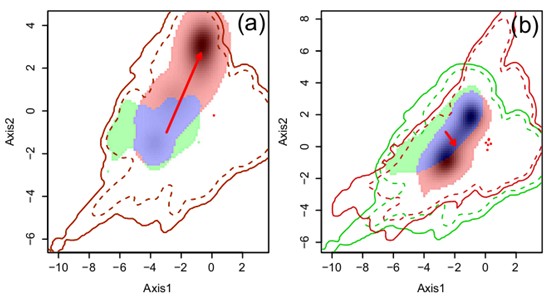Niche conservatism refers to the tendency of a species’ ecological niche to be conserved over space and time, an assumption that is increasingly considered in evolutionary, ecological and conservation studies. In particular, it is a pivotal assumption for ecological niche models (ENMs), which depict Grinnellian species niches by correlating species’ geographic occurrences with environmental variables (i.e., ‘climate-matching’ with climate variables only) and use them to project the potential distribution of species in time and space. Nevertheless, there is still considerable debate on the climate niche conservatism of species. Non-native species offer excellent model systems for examining niche conservatism and evolution within a short time scale through comparisons of climate attributes between the native and invaded ranges. Two recent studies have suggested that climatic niche shifts are rare for non-native plants (<15% of 50 species displaying niche shifts, i.e., ≥10% expansion in realized climatic niche) and birds (29% of 28 species showing niche shifts). Whether the same patterns of niche shifts are found in other organisms remains unknown. Furthermore, little is known about the factors contributing to niche shifts when they occur.
Based on the occurrence of 71 reptile and amphibian species, professor Yiming Li’ group (Diversity and Spatial Ecology Research Group) compared native and non-native realized niches in 101 invaded ranges at a worldwide scale and identified the factors that affect niche shifts. They found that approximately 57% of the invaded ranges (51% for amphibians and 61% for reptiles) showed niche shifts (≥10% expansion in the realized climatic niche). Climatic niche shifts were pervasive among non-native herpetofauna (Fig 1), a pattern that was strikingly different from those of Holarctic non-native plants and European non-native birds. Island endemics, species introduced to Oceania and invaded ranges outside the native biogeographic realm showed a higher proportion of niche shifts. Niche shifts were more likely for species that had smaller native range sizes, were introduced earlier into a new range or invaded areas located at lower latitudes than the native range. These results suggested that ‘climate matching’ as a guide for risk assessments of initial introductions was not warranted for the non-native herpetofauna. The results explain how the debate on niche conservation between invaded and native ranges for non-native species can arise (e.g., in terms of differences among the non-native plants, birds and herpetofauna in this study). The study also provides insights into the climatic niche dynamics for both native and invaded ranges. This understanding may facilitate better ENM-based predictions of the risks of biological invasions.
The paper has been published in Global Ecology and Biogeography (http://onlinelibrary.wiley.com/doi/10.1111/geb.12191/pdf )

Fig. 1. Examples of climatic niche dynamics between native and invaded ranges: (a) the American bullfrog (Lithobates catesbeianus) introduced within the native biogeographic realm (Nearctic) and (b) the red-eared slider (Trachemys scripta elegans) introduced from the Nearctic to the Palearctic. The solid and dashed contour lines indicate 100% and 75%, respectively, of the available (background) environment (green: the native climatic background; red: the invasive background). Green area: unfilling; blue area: stability; and red area: expansion. The solid arrows (dashed arrows) represent the change in the center of the species niche (climatic space) between the native and invaded ranges (the dashed line in figure (a) is superimposed, as the introduction event occurred in the same biogeographic realm)

